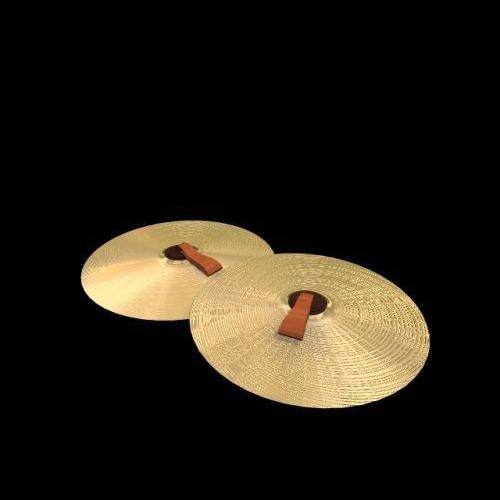The history of cymbals
1052 views · Organized by 花昼 on 2022-03-08
Cymbals originated in West Asia and were popular in the Northern Wei Dynasty. After the Ming and Qing Dynasties, it became an important accompaniment instrument for opera. Cymbal: In ancient times, it was called "copper cymbal" and "copper plate", and folks called it "cymbal". is a common percussion instrument. Long history and strong performance. It is not only used in national music, local drama, wind and percussion music and gong and drum music, but also widely used in folk songs and dances, entertainment and publicity activities of all ethnic groups.

In the early 6th century, copper cymbals were very popular among the folk of the Northern Wei Dynasty, and were used in Buddhist music for a long time. Cymbals were used in the nine music of the Sui Dynasty and were used in the five musics of Tianzhu, Xiliang, Qiuci, Anguo and Kanguo. In the Tang Dynasty, seven of the ten music used cymbals, especially in Yan music, there were also two types of bronze cymbals and bronze cymbals.
In the Sui and Tang Dynasties frescoes in the Thousand Buddha Caves in Dunhuang and the music and dance stone carvings in the tomb of Wang Jian, the former Shu emperor of the Five Dynasties in Chengdu, there are already painted figures of people striking a copper cymbal. During the Ming and Qing Dynasties, the cymbal was an accompaniment instrument in local dramas such as Kunqu Opera.

In the early 6th century, copper cymbals were very popular among the folk of the Northern Wei Dynasty, and were used in Buddhist music for a long time. Cymbals were used in the nine music of the Sui Dynasty and were used in the five musics of Tianzhu, Xiliang, Qiuci, Anguo and Kanguo. In the Tang Dynasty, seven of the ten music used cymbals, especially in Yan music, there were also two types of bronze cymbals and bronze cymbals.
In the Sui and Tang Dynasties frescoes in the Thousand Buddha Caves in Dunhuang and the music and dance stone carvings in the tomb of Wang Jian, the former Shu emperor of the Five Dynasties in Chengdu, there are already painted figures of people striking a copper cymbal. During the Ming and Qing Dynasties, the cymbal was an accompaniment instrument in local dramas such as Kunqu Opera.
Involving musical instruments
The cymbal (pinyin: chǎ) is a Chinese percussion instrument, that is, a small cymbal. Also known as cymbals, hinges, etc. There are two common types of Chinese folk cymbals: brass cymbals and iron cymbals. Because the cymbal is an instrument with no fixed pitch, generally speaking, the sound of the small cymbal is the highest, followed by the middle cymbal, and the sound of the large cymbal is the lowest.
Guess you like
Organized by 晚荣 on 2022-03-02
The primitive man learned to slap, which is the basic method of generating rhythm. It was further discovered that pairs of stones, sticks or slats could be used to touch each other, and then various bump instruments including cymbals were developed, which is an extension of replacing slaps with utensils.
read >>
Organized by 长恭 on 2022-02-25
Cymbals and cymbals are not the same musical instrument, and their origins, shapes, and performances are very different.
read >>
 渝公网安备 50010702504639号
渝公网安备 50010702504639号